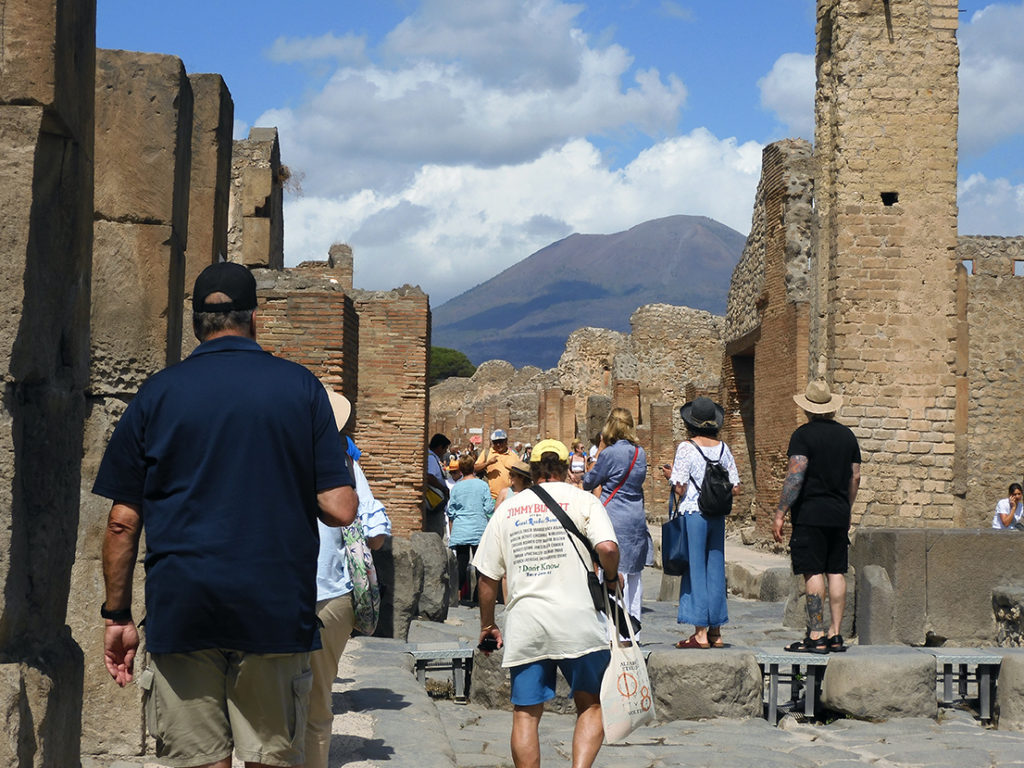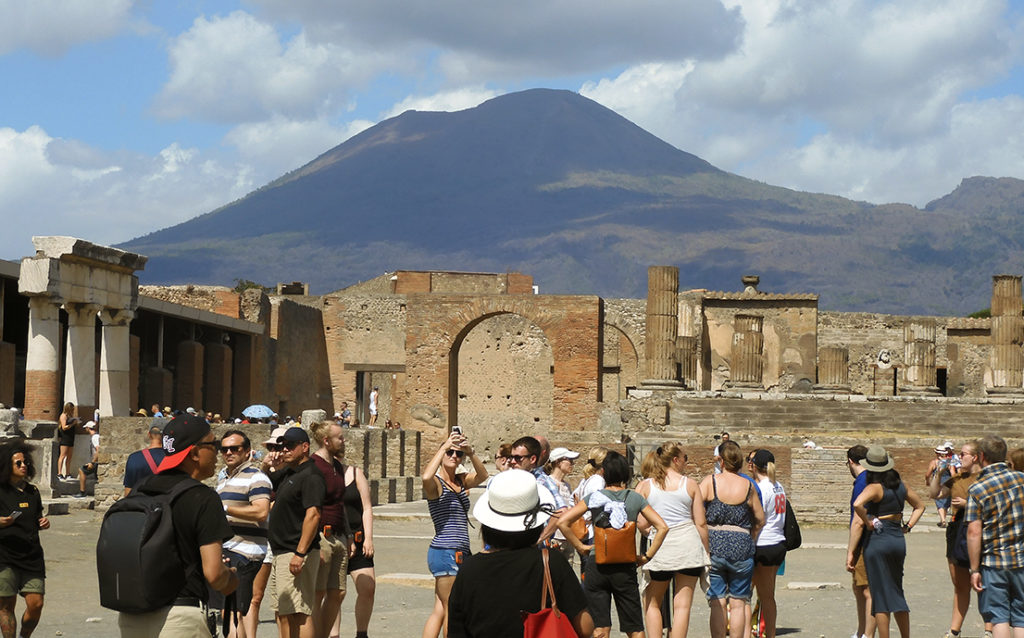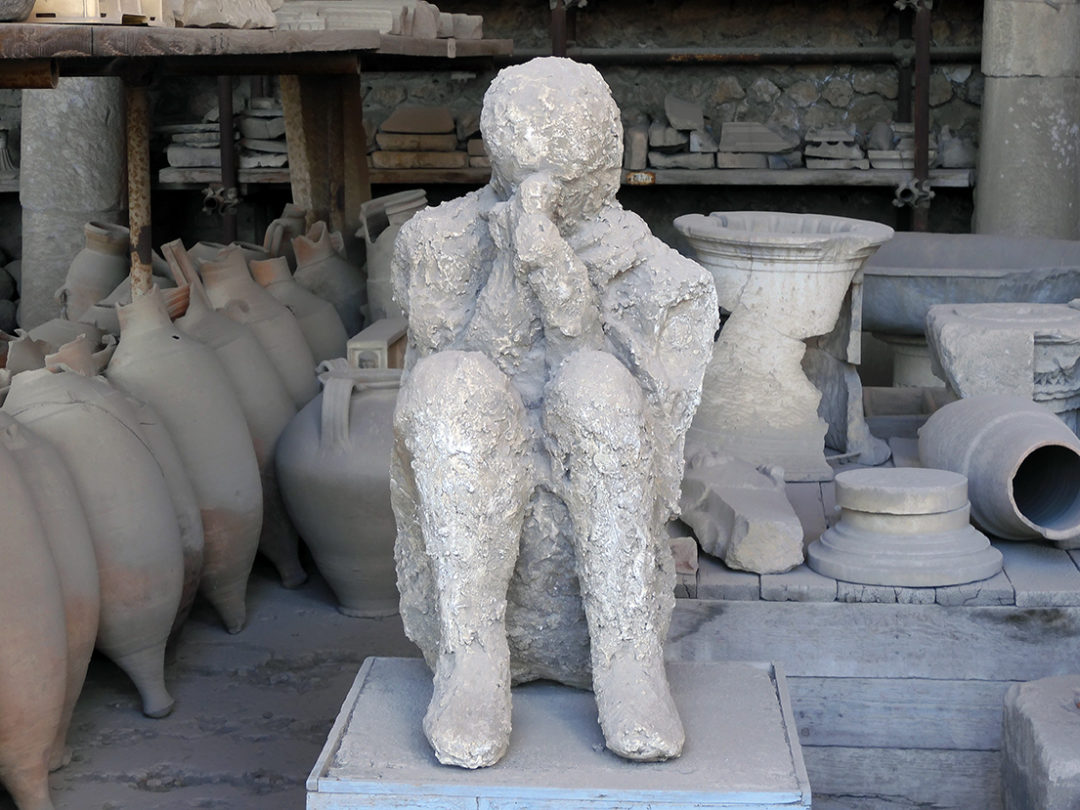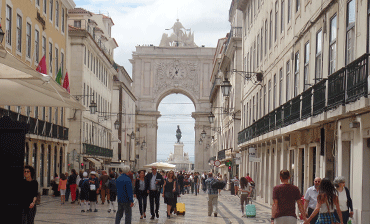We arranged transportation through Positano Car Service, Via Cristoforo Colombo 2 www.positanocarservice.com) and for a private tour through Pompeii. Our driver, Antonio, is also an amateur photographer and made multiple stops to allow us to take pictures on the way. He eventually started taking pictures for us of the various sights. At Pompeii, we were met by a pleasant woman, Mena, short for Philomena, who would serve as our guide. She proved to be knowledgeable of the history of the place.
She began by informing us that Pompeii was the Etruscan name for the region. The earliest settlers built five cities and Pompeii means five cities in Etruscan. Much of the city was built following Greek city layout, testifying to the influence of the Greeks. We were also able to visit the temples of Apollo and Venus who were Etruscan gods and goddess, and were the predecessors of Zeus and Jupiter under the Greeks and Romans. This was essentially the same explanation we had been given in Volterra about the role of the Etruscans in the establishment of a single unified religious hierarchy prior to the Christians era.
Mena mentioned that the site first came to be excavated in the 1700s by the Spanish, who ruled this region at that time. She then told us about Pliny the Elder, who was an Admiral in the Roman Navy. He observed the eruption and sailed to render aid to the city. However, he died as a result of the poisonous gases that were released and spread over the site. Pliny the Elder was a naturalist and had written several treatises on the flowers and fauna of the region.

Mena told us that Pliny the Younger, was the nephew of the Admiral. He too observed the events, but instead of rendering aid, he stayed a safe distance away. Years later he wrote letters that were discovered describing the events in detail. It was approximately noon when the volcano explosion took place. This was important because the eruption started earlier in the day. Earthquakes occurred that morning, but earthquakes had been common during the entire 800-year history of the city prior to the events of 79 AD. The explosion threw massive amounts of earth into the atmosphere, filling in the waterways that served Pompeii, which had been on the water, but now rests a full half mile from it. Pompeii was far enough from Vesuvius that it was not covered by hot lava as was the case with Herculaneum, a seaport not far away. Instead, a blast of heat reaching nearly 500 degrees tore through the city, followed by poisonous gases, and then a covering of volcanic ash and smaller stone that buried rather than destroyed the city. This was important in it preserved much of the stone work, but evaporated the wooden aspects of their structures.
We toured several areas of the site. The first area is the gladiator training center, which was a large field surrounded by small cell like structures where the gladiators lived. Mena distinguished for us the different types of gladiators. Most were professionals, although some were slaves. They did not fight to the death in every battle, but did fight with a wide variety of weapons as has been depicted in movies. All gladiators were men, as women were not thought to need to train or be physically active in this era. We passed through the small theater just beyond the gladiator area. Seeing how intimate it was and the nature of the acoustics. Just behind the stage was an area thought to be where musicians played during performances. Walking out the other side of the theater, we stepped into the main north south stone street. Mena informed us that there were stepping stones across the street at various points. These stones enabled the Pompeiians to cross without stepping into the actual street. The reason was that sewerage was dumped from the buildings into the street. They did discover that it was flushed from time-to-time with a mixture of fresh water and vinegar, but was thought to be more to address the smell than the infectious nature of the murky water.
We then toured the home designated as Casa del Menandro, which was the name given based on a wall painting of the poet and playwright by that name from that era. It was excavated when the area was under Spanish rule, thus the Spanish name of this particular building. It was thought to be owned by a wealthy and influential politician based on the elaborate nature of the building’s size and artwork found on the walls in several of the rooms.

Next stop was the bathhouse, which had separate baths for men and women, a sauna with a double wall to better insulate it, a swimming pool, which was heated from below and an exercise yard, again reserved for use by the men. Examples of the intricate nature of the finish work to their buildings was on display at this site. The most significant finding here was that the water was conveyed by lead pipes still seen at this location. The health effects of lead in the water must have not yet been noticed at the time of the eruption, but the city was likely doomed from this architectural choice made by the people who built the city.
Mena chose not to take us to the brothel as the lines at the time of day we made our visit were very long. We moved on to the Forum, which was aligned to look directly at Vesuvius. Writing on the preserved elements indicated that the fabric market was on one side of the Forum and the food market on the other. In the granary portion of the food market were actual artifacts from the site which included wine vessels also found to contain lead interiors, a fossilized dog, man in a crouched position attempting to cover his head, and a baby thought to be about four years of age.

We walked past the temples to Apollo and Venus on our way out with an appreciation for how much living in Pompeii was not dissimilar to how we live today, just limited by the technologies and health practices they employed to build the city and conduct their lives.





No Comments